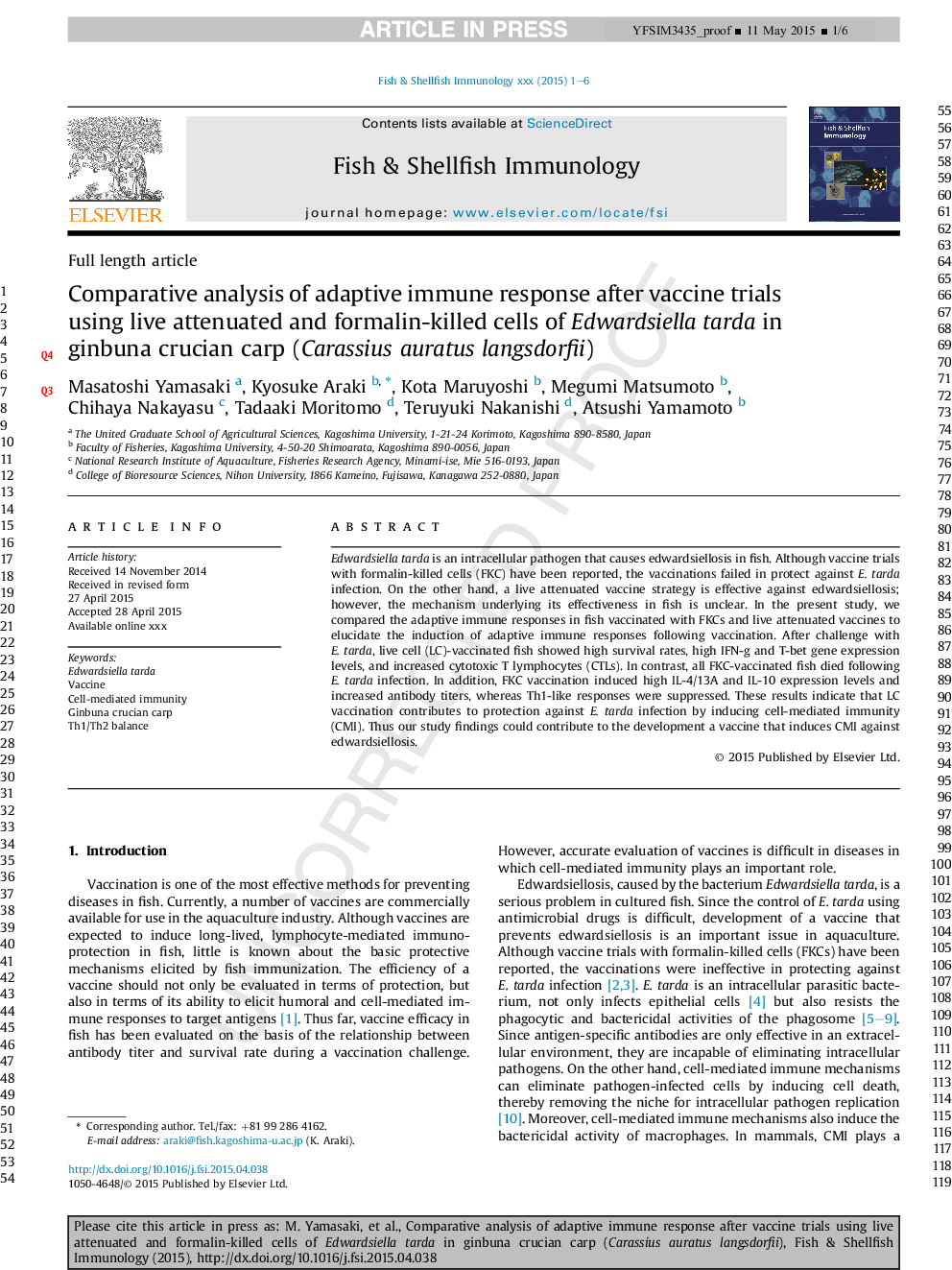| Article ID | Journal | Published Year | Pages | File Type |
|---|---|---|---|---|
| 10971822 | Fish & Shellfish Immunology | 2015 | 6 Pages |
Abstract
Edwardsiella tarda is an intracellular pathogen that causes edwardsiellosis in fish. Although vaccine trials with formalin-killed cells (FKC) have been reported, the vaccinations failed in protect against E. tarda infection. On the other hand, a live attenuated vaccine strategy is effective against edwardsiellosis; however, the mechanism underlying its effectiveness in fish is unclear. In the present study, we compared the adaptive immune responses in fish vaccinated with FKCs and live attenuated vaccines to elucidate the induction of adaptive immune responses following vaccination. After challenge with E. tarda, live cell (LC)-vaccinated fish showed high survival rates, high IFN-g and T-bet gene expression levels, and increased cytotoxic T lymphocytes (CTLs). In contrast, all FKC-vaccinated fish died following E. tarda infection. In addition, FKC vaccination induced high IL-4/13A and IL-10 expression levels and increased antibody titers, whereas Th1-like responses were suppressed. These results indicate that LC vaccination contributes to protection against E. tarda infection by inducing cell-mediated immunity (CMI). Thus our study findings could contribute to the development a vaccine that induces CMI against edwardsiellosis.
Related Topics
Life Sciences
Agricultural and Biological Sciences
Aquatic Science
Authors
Masatoshi Yamasaki, Kyosuke Araki, Kota Maruyoshi, Megumi Matsumoto, Chihaya Nakayasu, Tadaaki Moritomo, Teruyuki Nakanishi, Atsushi Yamamoto,
